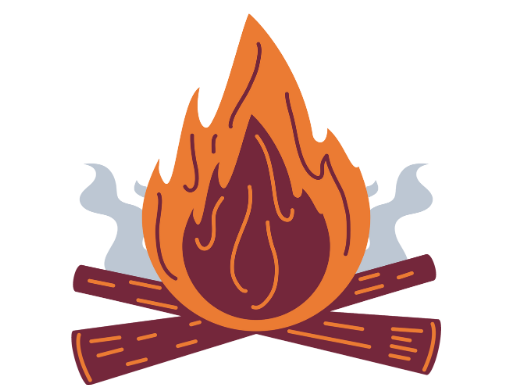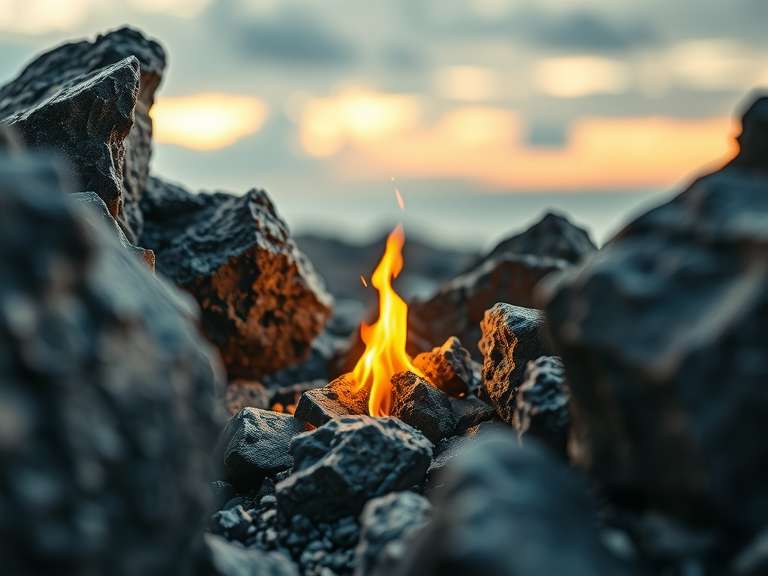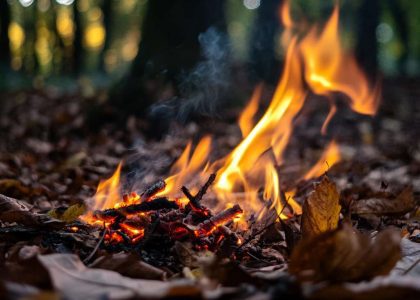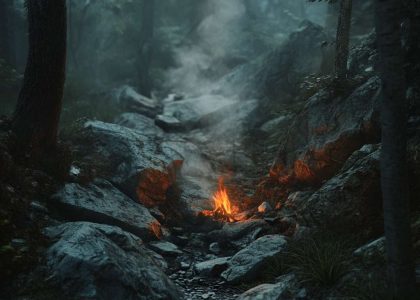Lighting a fire can be a joyous part of outdoor living, but when the wind picks up, it can transform this simple act into a frustrating challenge. The turbulent gusts not only disrupt the flame’s stability but can also create safety hazards. Understanding how to overcome these obstacles is essential for any camper, griller, or outdoor enthusiast. With the right techniques and tools, you can effectively light a fire even in breezy conditions.
In this article, we will explore key challenges posed by wind, how natural fire starters can aid your efforts, effective techniques for shielding your fire, optimal wood arrangement strategies, and important safety precautions to consider. Prepare yourself with knowledge that will ensure your fire not only ignites but thrives amidst the elements. Get ready to enjoy the warmth and ambiance of a well-managed fire, no matter the weather! 🔥
What Challenges Does Wind Present When Starting a Fire?

Wind can significantly complicate the process of starting a fire, affecting both airflow and flame stability. Here are some of the key challenges it presents:
- Increased Oxygen Supply: Wind can turbulent airflow, causing rapid combustion which can lead to uncontrolled flames. This rapid burning can deplete fuel quickly, requiring constant attention to maintain the fire.
- Dispersal of Embers: Strong winds can carry embers away from the fire, posing a risk of igniting unintended areas. This can be particularly hazardous in dry environments where stray embers may lead to wildfires.
- Flame Instability: Gusts of wind can disturb the flame, making it flicker or extinguish. This instability can hinder the ignition process and make it challenging to maintain a consistent fire.
- Drying Out Fuels: On a positive note, wind can help dry out damp fuels, thus making them more susceptible to ignition. However, managing the flame proved to be more critical than the initial advantage of dry fuel.
To effectively combat these challenges, ensure that your fire starting method is adaptive to these conditions. Using natural fire starters like wax-infused cubes or pine rolls can provide a reliable ignition source and sustained flame despite the wind’s interference. For deeper insights, you may want to explore the difficulties of using green or wet wood. 🔥
How Do Natural Fire Starters Help in Windy Conditions?
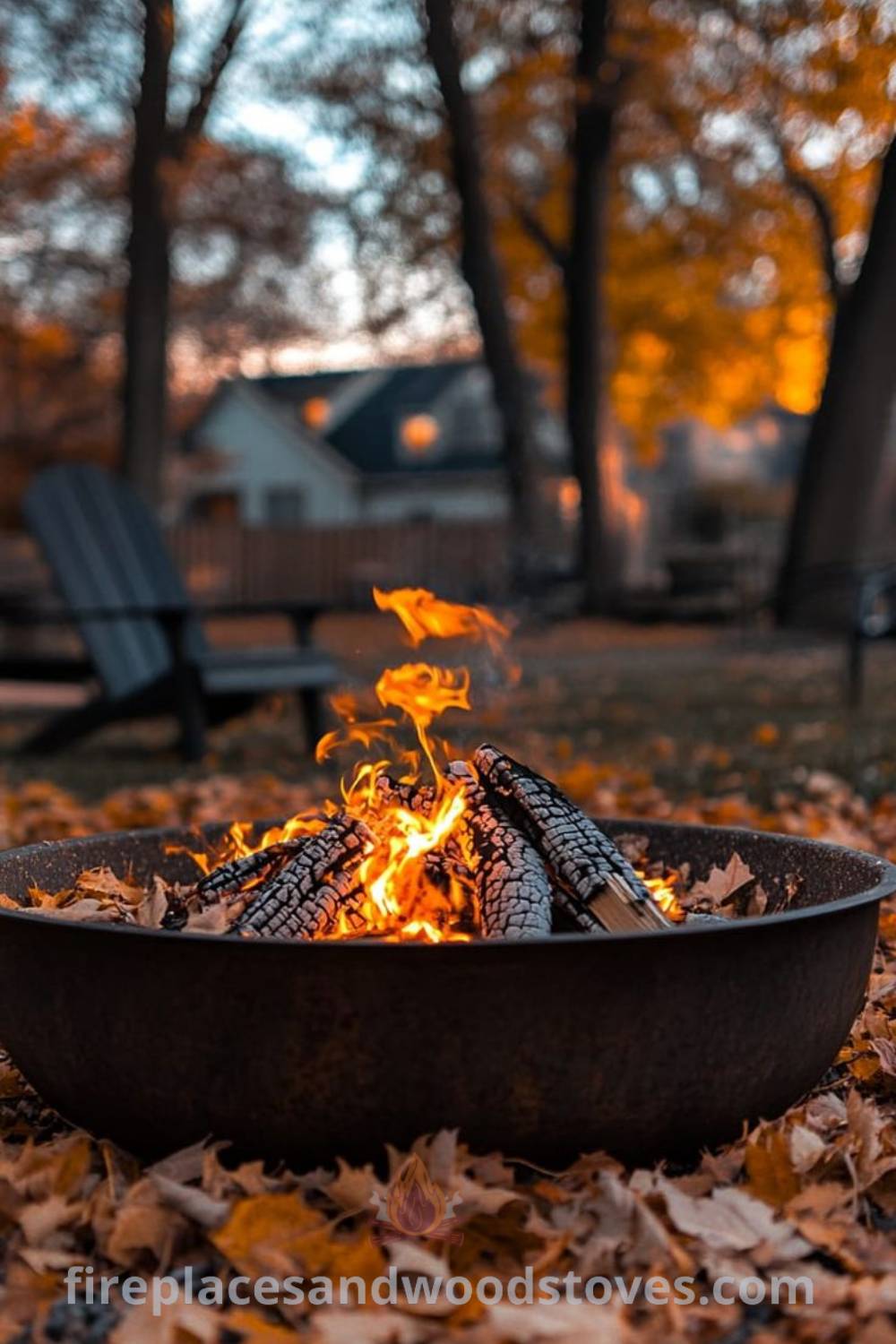
Natural fire starters play a crucial role in overcoming the difficulties presented by windy conditions. They possess unique attributes that enhance the fire-starting experience, such as:
- Reliable Flame Source: High-quality starters can ignite quickly even in adverse conditions, ensuring a robust beginning to your fire.
- Moisture Resistance: Fire starters with a wax coating perform well even in damp conditions, making them ideal for unpredictable weather.
- Controlled Burn Time: Featuring a burn time that averages around 10 minutes, these starters provide enough duration to foster safe flame development.
- Flexible Use: Effective for various applications from indoor to outdoor usage, these starters enhance overall convenience when exploring different environments.
Incorporating these fire starters into your fire-starting routine equips you to better manage the challenges posed by wind. It’s worth further exploring how to start a fire for beginners to refine your approach to ignition. 🔥
*As an Amazon Associate I earn from qualifying purchases
What Techniques Can You Use to Shield Your Fire from the Wind?

Wind can be a formidable adversary when trying to maintain a stable fire. Employing protective measures can greatly increase fire stability. Here are effective techniques you can use:
- Building a Windbreak: Create a natural or artificial barrier to deflect wind. Trees such as cedar or shrubs can be instrumental, or you can construct a wind barrier with heavy blankets or tarps temporarily.
- Using a Fire Pit: Fire pits serve a dual purpose; containing the fire while providing an added layer of wind protection, it ensures that flames remain insulated from strong gusts.
- Employing Wind Guards: Installing tempered glass wind guards around your fire source can shield flames from sudden gusts. This adds a layer of safety and control.
- Using Rocks or Logs: Arranging large rocks or cut logs around the fire integrates natural windbreaks without bringing in additional gear or materials.
- Creating a Dakota Fire Hole: This technique facilitates effective airflow and minimizes smoke output, ideal for windy conditions. By digging two holes, airflow to the fire is optimized.
These protection techniques can dramatically enhance your fire’s longevity and stability, making your outdoor experience more enjoyable and secure. For further skill enhancement, investigating how to start charcoal may prove beneficial as well. 🔥
How to Arrange Wood for Optimal Ignition in Wind?

Strategical wood arrangement is crucial for achieving effective ignition even in breezy conditions. Consider these specialized techniques:
- Lean-To Fire Lay: Position a larger log to act as a windbreak, allowing smaller kindling to lean against it. This structure promotes oxygen flow while maintaining protection from wind.
- Layering Technique: Start with dry tinder, add kindling, then larger logs. This progressive layering encourages adequate airflow and makes ignition easier.
- Windbreak Structures: Use natural elements like logs and rocks to create a barrier, enhancing the fire’s stability while optimizing air intake.
Combining these techniques with the use of natural fire starters fosters a reliable ignition process, enabling you to enjoy the fire even amid gusty conditions. For those intrigued by fire-starting options, consider learning which fire starter is the strongest. 🔥
What Safety Precautions Should You Take When Starting a Fire in Windy Conditions?
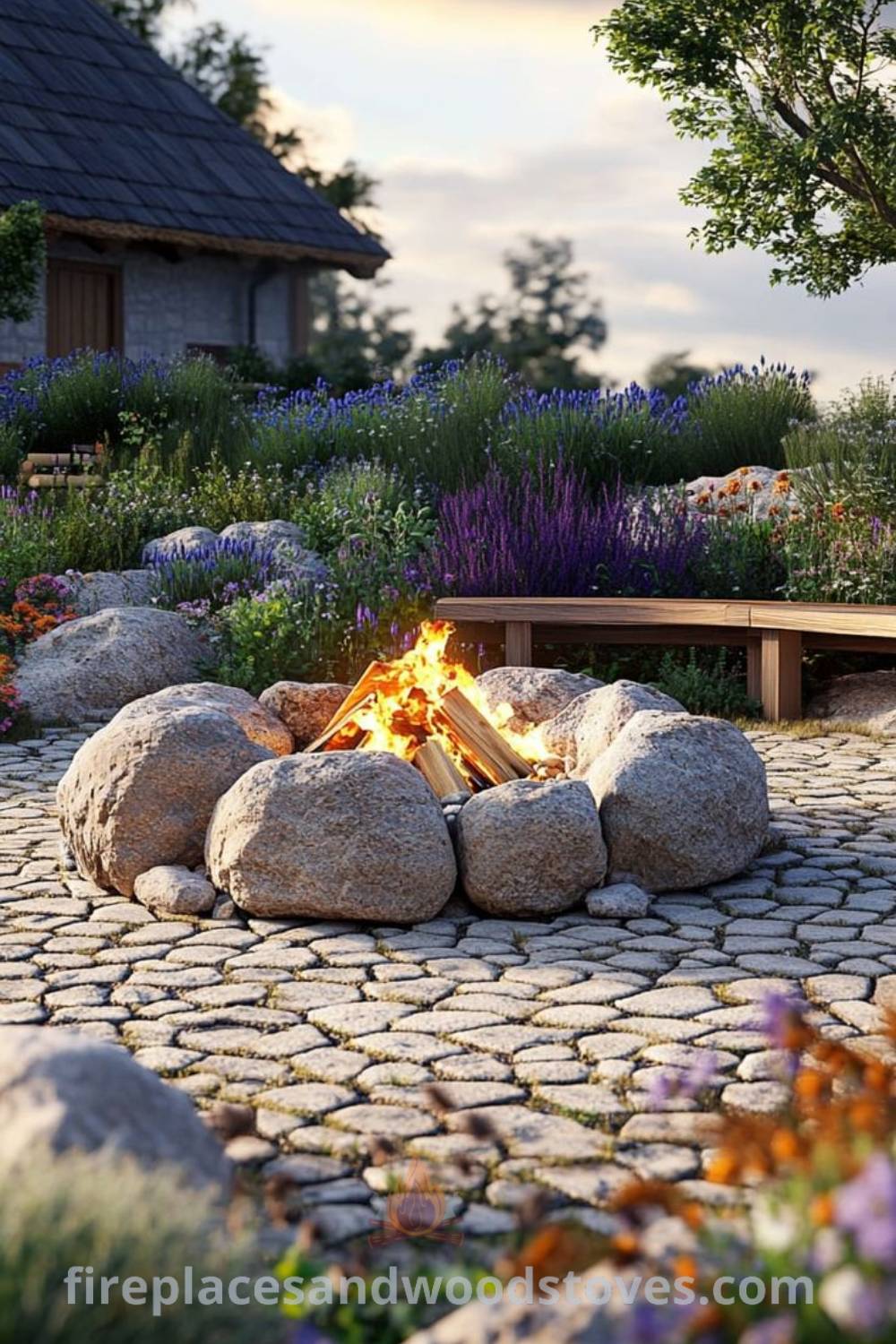
Safety is paramount when lighting a fire in windy conditions to avoid accidents and ensure controlled burning. Important precautions include:
- Assess Wind Conditions: Ideally avoid starting a fire when winds exceed 5 mph, as stronger gusts amplify risks such as uncontrollable flames or wildfire risks.
- Choose a Safe Location: Ensure your fire pit is set in a sheltered area, surrounded by gravel or mineral soil to prevent spreading flames. Keep a distance from structures or trees to offer a buffer zone.
- Clear the Surrounding Area: Maintain a 10-foot radius free from flammable materials, including leaves, twigs, and dry grass to lower fire risks.
- Keep Monitoring: Constant supervision of the fire is critical as changing wind conditions can pose serious threats to fire safety.
- Have Extinguishing Tools Nearby: Prepare for emergencies by keeping water, a fire extinguisher, or a shovel available to mitigate any accidental spread of flames.
- Extinguish the Fire Properly: Once the fire is out, ensure it is fully extinguished by dousing it with water and carefully mixing the ashes until cool.
Common Mistakes When Starting a Fire in Windy Conditions
- 🔥 Igniting without assessing wind direction and speed.
- 🔥 Using flammable liquids in high wind conditions.
- 🔥 Ignoring local burn bans during dry seasons.
- 🔥 Underestimating the necessary spacing between the fire and flammable materials.
- 🔥 Forgetting to monitor the fire continuously once it is lit.
🎒 Essential Tools for Reliable Ignition
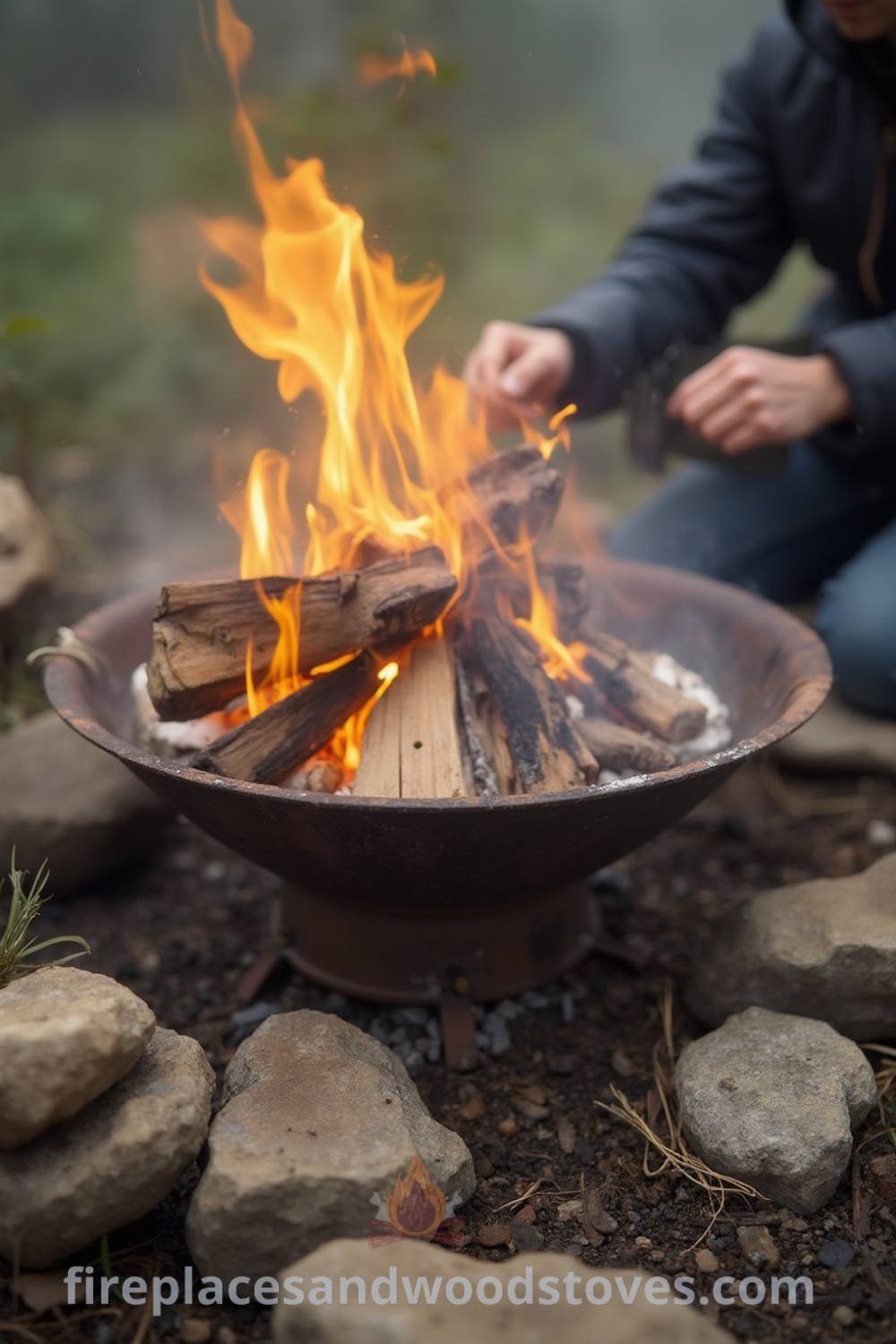
| Tool/Method | Description | Ideal Conditions |
|---|---|---|
| Wax-infused Fire Starters | Coated for moisture resistance and extended burn, providing consistent ignition. | Windy & dry conditions |
| Tinder and Kindling | Natural materials like dry leaves, grass, or birch bark that ignite easily when sparked. | All conditions but perform best when dry |
| Portable Fire Pit | Containment and easy transport, lightweight structure for outdoor settings. | Windswept outdoor areas |
| Wind Screens | Glass or mesh options that help shield the flames from sudden gusts. | Competent for any weather |
| Ground Insulation (rocks, gravel) | Reduces fire spread risk while providing heat-retaining properties. | All outdoor conditions |
